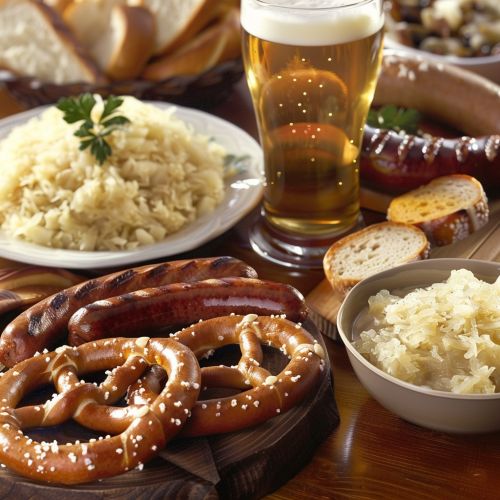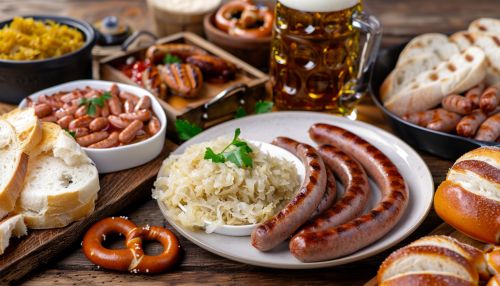German cuisine
Overview
German cuisine, a rich and diverse culinary tradition, has evolved through centuries of social and political change. The country's food varies greatly from region to region, with each area boasting its own unique specialties and variations. The cuisine is characterized by its hearty and varied nature, with an emphasis on meats, breads, and potatoes, as well as a wide array of regional beers and wines.
History
The history of German cuisine can be traced back to the Middle Ages, when the country was divided into numerous small states, each with its own distinct culinary traditions. The cuisine was largely based on hearty, simple fare, designed to sustain people through long, hard winters. Over time, these regional dishes have evolved and been refined, resulting in the diverse range of foods that make up German cuisine today.
Regional Variations
Germany's cuisine varies greatly from region to region, reflecting the country's diverse geography and history. In the north, dishes are heavily influenced by the sea, with fish and seafood playing a prominent role. In the south, the cuisine is more hearty and meat-based, with dishes such as sauerbraten (a pot roast, usually of beef, marinated before being slow-cooked) and schweinshaxe (pork knuckle) being popular. The eastern regions of Germany, influenced by their Slavic neighbors, feature dishes such as Silesian dumplings and pickled herring.
Ingredients
German cuisine is known for its hearty ingredients. Meats, particularly pork, beef, and poultry, are a staple of most meals. Fish and seafood are also commonly consumed, particularly in the coastal regions. Potatoes, breads, and a variety of grains form the basis of many dishes, while vegetables such as cabbage, carrots, turnips, and onions are also widely used. German cuisine also makes extensive use of a variety of sausages, with over 1,500 different types of Wurst (sausage) produced in the country.
Dishes
There are many iconic dishes in German cuisine. Sauerkraut, fermented cabbage, is a common side dish, while bratwurst, a type of German sausage, is popular throughout the country. Other notable dishes include schnitzel, a breaded and fried meat cutlet, and sauerbraten, a pot roast that is marinated before being slow-cooked. In addition, Germany is known for its bread, with over 1,000 different types produced in the country.
Beverages
Germany is renowned for its beverages, particularly its beers and wines. The country is one of the world's leading beer producers, with a vast array of styles and flavors. The Reinheitsgebot, or "beer purity law," enacted in 1516, stipulates that German beers can only be produced with water, barley, and hops. Germany is also known for its wine, particularly Riesling, a white grape variety which is grown in several regions throughout the country.
Desserts
German desserts are varied and delicious, ranging from cakes and pastries to puddings and compotes. Black Forest Gateau, a rich chocolate cake layered with cherries and whipped cream, is one of the most famous German desserts. Other popular desserts include Stollen, a fruit bread often eaten during the Christmas season, and Apfelstrudel, a type of apple strudel.
See Also


